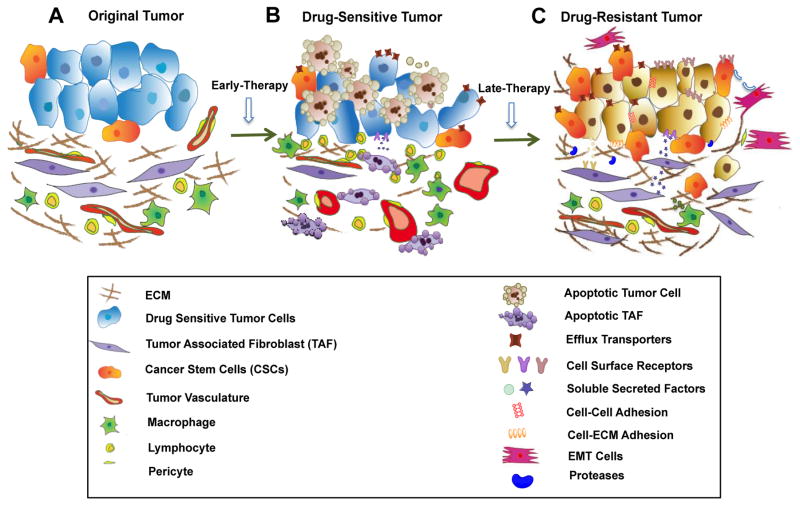Figure 6. Drug resistance mechanism.
In original tumors, tumor cells remain intimately with surrounding microenvironment. High interstitial fluid pressure and compression of blood vessels limit penetration of drugs. Small subpopulation of CSCs serves as an intrinsic resistant component (A). Efficient chemotherapy leads to apoptosis of TAF and tumor cells and normalizing of tumor vasculature. However, elevated expression of efflux receptors, activated tumor cellular pathways and solute factors secreted from damaged fibroblast start to induce initial drug resistance (B). In late treatment, protective microenvironment facilitates development of acquired drug resistance through cell-ECM adhesion, cellular interaction, secreted factors or proteases. EMT and CSCs also add to the permanent resistance and failure of chemotherapy.

